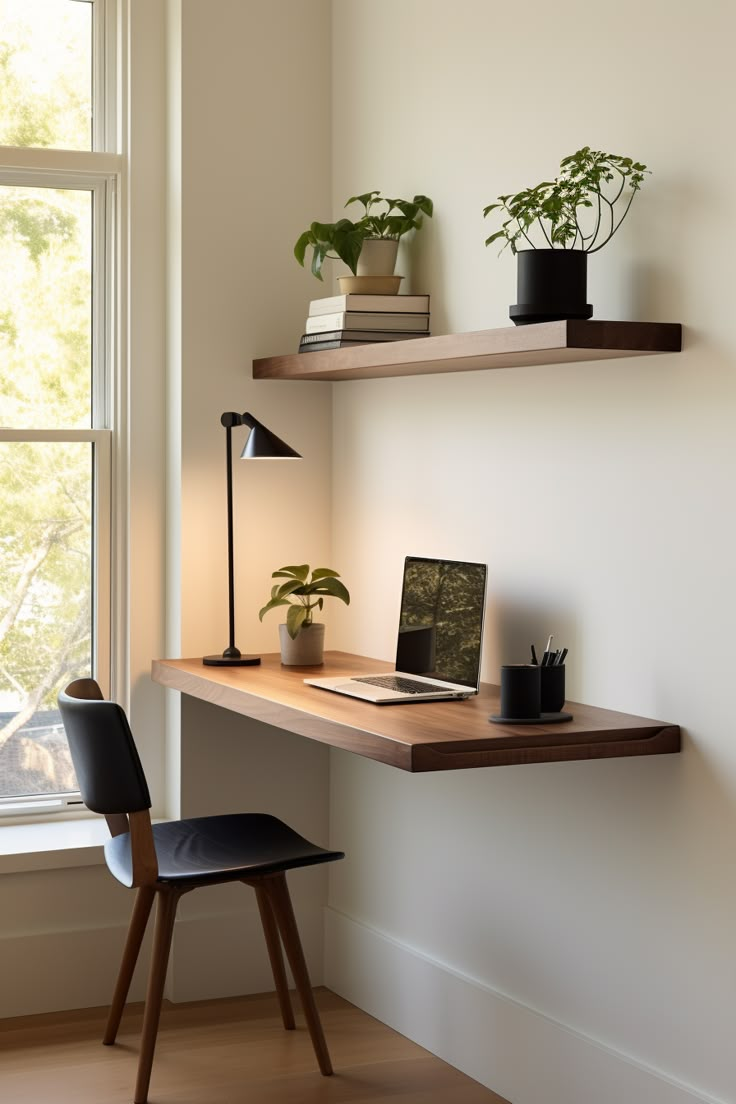Indoor plants are much more than just decorative elements. They are life-enhancing additions to any home or office space. Beyond their ability to purify the air and add a splash of natural beauty, they create an atmosphere of calm and warmth that no other décor can replicate. Imagine stepping into a room where lush greenery welcomes you, instantly making the space feel fresher and more inviting.
With so many species of plant options available, how do you choose the right ones for your home? The key is to consider your lifestyle, the atmosphere you want to create, and the unique needs of each plant. Some plants thrive in low light, while others need the sun to shine through your windows. Some prefer dry environments, while others require a bit more moisture.
If you’re unsure where to start, you can seek expert guidance from Botanists, Horticulturists, or Interior decorators who specialize in plant care and home décor. But sometimes, the best choice comes from trusting your own instincts: picking a green companion that simply feels right for your space and personality.
Let’s explore 10 plants on my list for indoor decoration. Each of these plants will not only complement your space’s aesthetic but also bring a touch of nature inside. You’ll learn about their individual needs, how to care for them, and what factors to consider before bringing them home.
1. Snake Plant (Sansevieria Trifasciata)
The snake plant, also known as mother-in-law’s tongue, is one of the most popular indoor plants due to its hardiness and low maintenance needs. Its tall, striking leaves create a bold look in any room, making it a wonderful decorative piece.
Why It’s Perfect for Indoor Spaces: Snake plants are incredibly adaptable to various lighting conditions. They can survive in low to bright light, making them ideal for rooms with less natural sunlight, such as hallways or offices. Additionally, they are excellent air purifiers, removing toxins like formaldehyde from the air.
What it Needs to Thrive: They need minimal water, typically once every 2 to 3 weeks, depending on the temperature and humidity of your space. They thrive in well-drained soil, so a pot with drainage holes is essential.
Considerations: If you’re new to plant care, the snake plant is a fantastic choice. It’s tough and can survive neglect. However, be mindful of overwatering, as it can cause root rot.
Care Tips: Place your snake plant in indirect light, and make sure the potting soil is well-draining. Water it sparingly: when the top inch of soil feels dry.

2. Peace Lily (Spathiphyllum)
The peace lily is a beloved indoor plant known for its elegant white flowers and dark green foliage. It’s not only visually pleasing but also offers air-purifying benefits, removing harmful toxins from the environment.
Why It’s Perfect for Indoor Spaces: Peace lilies thrive in low to medium light, making them perfect for indoor environments where sunlight may be limited. Their air-purifying qualities make them ideal for bedrooms, offices, and living rooms.
What it Needs to Thrive: Peace lilies prefer moist soil but do not like to sit in water. It’s important to ensure good drainage in the pot. They will also benefit from occasional misting in dry conditions.
Considerations: Peace lilies are relatively easy to care for, but they are sensitive to overwatering and drafts. Ensure they are not in direct sunlight, as their leaves can burn.
Care Tips: Keep your peace lily in a space with moderate to low light. Water it once a week or when the soil feels dry, and occasionally wipe the leaves with a damp cloth to keep them shiny and clean.

3. Spider Plant (Chlorophytum comosum)
The spider plant is a classic favorite for anyone looking for a vibrant, low-maintenance indoor plant. With its long, arching green and white striped leaves and small plantlets that resemble baby spiders, this plant brings a lively feel to any room.
Why It’s Perfect for Indoor Spaces: Spider plants thrive in bright, indirect light and are tolerant of neglect, making them perfect for beginners. They are known for their ability to purify the air and improve indoor air quality.
What it Needs to Thrive: Spider plants prefer slightly moist soil, but they can tolerate dry periods. They do best in pots with good drainage and can be placed in various environments, from high shelves to tabletops.
Considerations: Spider plants are non-toxic to pets, making them a safe option for homes with cats or dogs. However, they do require occasional repotting, especially as they produce offshoots (baby plants).
Care Tips: Keep them in bright, indirect light and water it regularly when the soil feels dry. Remove the offshoots to encourage growth and prevent the plant from becoming overcrowded.

4. Aloe Vera
Known for its healing properties, Aloe vera is not only a great indoor plant but also a functional one. Its thick, fleshy leaves are filled with gel that can soothe minor burns and skin irritations. The plant’s striking form also adds a modern touch to your decor.
Why It’s Perfect for Indoor Spaces: Aloe vera is a succulent, meaning it can survive in drier conditions and doesn’t need frequent watering. It thrives in sunny spots and is well-suited for a home with lots of natural light.
What it Needs to Thrive: Aloe vera requires well-draining soil and should be watered infrequently—about once every two to three weeks. Make sure to avoid overwatering, as it can lead to root rot.
Considerations: Aloe vera’s spiky leaves can be dangerous to small children or pets if ingested, so be mindful of where you place it. This plant is best suited for a sunny windowsill or countertop.
Care Tips: Ensure it is placed in a sunny location with direct light. Water only when the soil is completely dry, and allow the plant to dry out between waterings.

5. Pothos (Epipremnum aureum)
Pothos is an extremely versatile and hardy trailing vine that can thrive in a variety of conditions. Its vibrant, heart-shaped leaves and rapid growth make it a popular choice for hanging baskets or shelves.
Why It’s Perfect for Indoor Spaces: Pothos can adapt to low, medium, or bright light, and it can also tolerate a bit of neglect. It’s an excellent air purifier, helping to remove toxins like benzene and formaldehyde from your environment.
What it Needs to Thrive: Pothos prefer to be kept on the drier side. Water the plant when the top inch of soil feels dry. It also does well in most types of soil, provided there’s good drainage.
Considerations: Pothos is toxic to pets, so be cautious if you have curious animals. Its trailing vines can grow quite long, so it may need occasional pruning to maintain its shape.
Care Tips: Hang or place your pothos in a spot with indirect light. Water it when the soil feels dry, and be sure to trim back any long, leggy vines to encourage bushier growth.

6. ZZ Plant (Zamioculcas zamiifolia)
The ZZ plant is another low-maintenance beauty that’s perfect for indoor spaces. Its glossy, dark green leaves and upright growth make it an attractive addition to any room, and it’s incredibly tough.
Why It’s Perfect for Indoor Spaces: The ZZ plant can thrive in low light and requires very little attention. It’s an excellent choice for offices or areas with limited natural light.
What it Needs to Thrive: they are drought-tolerant and should be watered sparingly. Overwatering can lead to root rot, so it’s best to allow the soil to dry out completely before watering again.
Considerations: The ZZ plant is toxic to pets, so keep it out of reach of animals. It’s also a slow grower, but its easy care makes it a low-effort choice for plant lovers.
Care Tips: Place them in low to moderate light, and water it when the soil is dry. Use well-draining soil and ensure the pot has drainage holes to avoid overwatering.

7. English Ivy (Hedera helix)
English ivy is a classic climbing vine known for its attractive, lobed leaves and ability to grow rapidly. It works well in a variety of settings and can be trained to climb trellises, shelves, or even window frames.
Why It’s Perfect for Indoor Spaces: It thrives in moderate to bright light and is a great air purifier, making it perfect for rooms where you want to create a refreshing atmosphere.
What it Needs to Thrive: English ivy requires consistently moist soil but should not be waterlogged. It thrives in cooler environments, so avoid placing it in hot, dry rooms.
Considerations: Ivy is toxic to pets, so be careful if you have animals that might chew on plants. Also, regular pruning will keep it from becoming unruly.
Care Tips: Keep English ivy in a well-lit area with indirect sunlight. Water regularly to keep the soil moist but not soggy, and trim any unwanted vines to maintain its shape.

8. Fiddle Leaf Fig (Ficus lyrata)
The fiddle leaf fig is a statement plant that adds a dramatic touch to any room. Its large, glossy leaves and tree-like structure make it a standout feature in modern homes and offices.
Why It’s Perfect for Indoor Spaces: Fiddle leaf figs thrive in bright, indirect light, making them perfect for sun-drenched spaces. Their bold appearance adds an element of sophistication to any room.
What it Needs to Thrive: This plant needs well-draining soil and regular watering, but it’s important not to let it sit in water. The fiddle leaf fig also enjoys humidity, so occasional misting can help.
Considerations: Fiddle leaf figs can be sensitive to changes in light or temperature, so they may require some extra attention to acclimate. Additionally, they are quite large, so make sure you have the space for this plant.
Care Tips: Keep them in a bright, indirect light spot and ensure the potting soil drains well. Water when the top inch of soil feels dry, and keep it away from drafts or temperature fluctuations.

9. Cast Iron Plant (Aspidistra elatior)
True to its name, the cast iron plant is nearly indestructible. Known for its dark green, glossy leaves and upright growth, it’s a fantastic option for those new to plant care.
Why It’s Perfect for Indoor Spaces: It thrives in low light, making it ideal for rooms with little to no natural sunlight. It can also tolerate temperature fluctuations and neglect, making it a reliable addition to your indoor garden.
What it Needs to Thrive: It prefers moderate watering, and the soil should be allowed to dry out between waterings. Cast iron plants are not picky about soil types as long as the soil drains well.
Considerations: This plant can survive neglect, but it’s important to avoid letting it sit in water. It is also non-toxic to pets, making it a safe option for households with animals.
Care Tips: Place the cast iron plant in a low-light location and water it when the soil is dry to the touch. Keep the plant away from direct sunlight to prevent leaf burn.

10. Rubber Plant (Ficus elastica)
The rubber plant is a large, attractive indoor plant with glossy, deep green leaves. It adds a touch of tropical elegance to any space and is easy to care for, making it a great choice for beginners.
Why It’s Perfect for Indoor Spaces: Rubber plants thrive in bright, indirect light, and their large leaves can instantly brighten up a room. They’re also known for their air-purifying qualities.
What it Needs to Thrive: Rubber plants require regular watering, but they do not like to sit in water. Be sure to allow the top of the soil to dry out between waterings. They also benefit from occasional pruning to keep their shape.
Considerations: While Rubber plants are relatively low-maintenance, they can grow quite large, so be sure to have enough space for them. They are toxic to pets, so keep them out of reach of curious animals.
Care Tips: Place them in a bright spot with indirect light, and water it when the top of the soil feels dry. Regularly wipe the leaves to remove dust and keep them glossy.

Indoor plants are not just about adding green to your space, they are about creating an environment that nurtures both your well-being and your aesthetic.
Do you already own any of the plants on this list, or are you planning to add some to your space? If your favorite indoor plant didn’t make the list, drop its name in the comments, someone might just discover their next green obsession!
Stay frosty.




